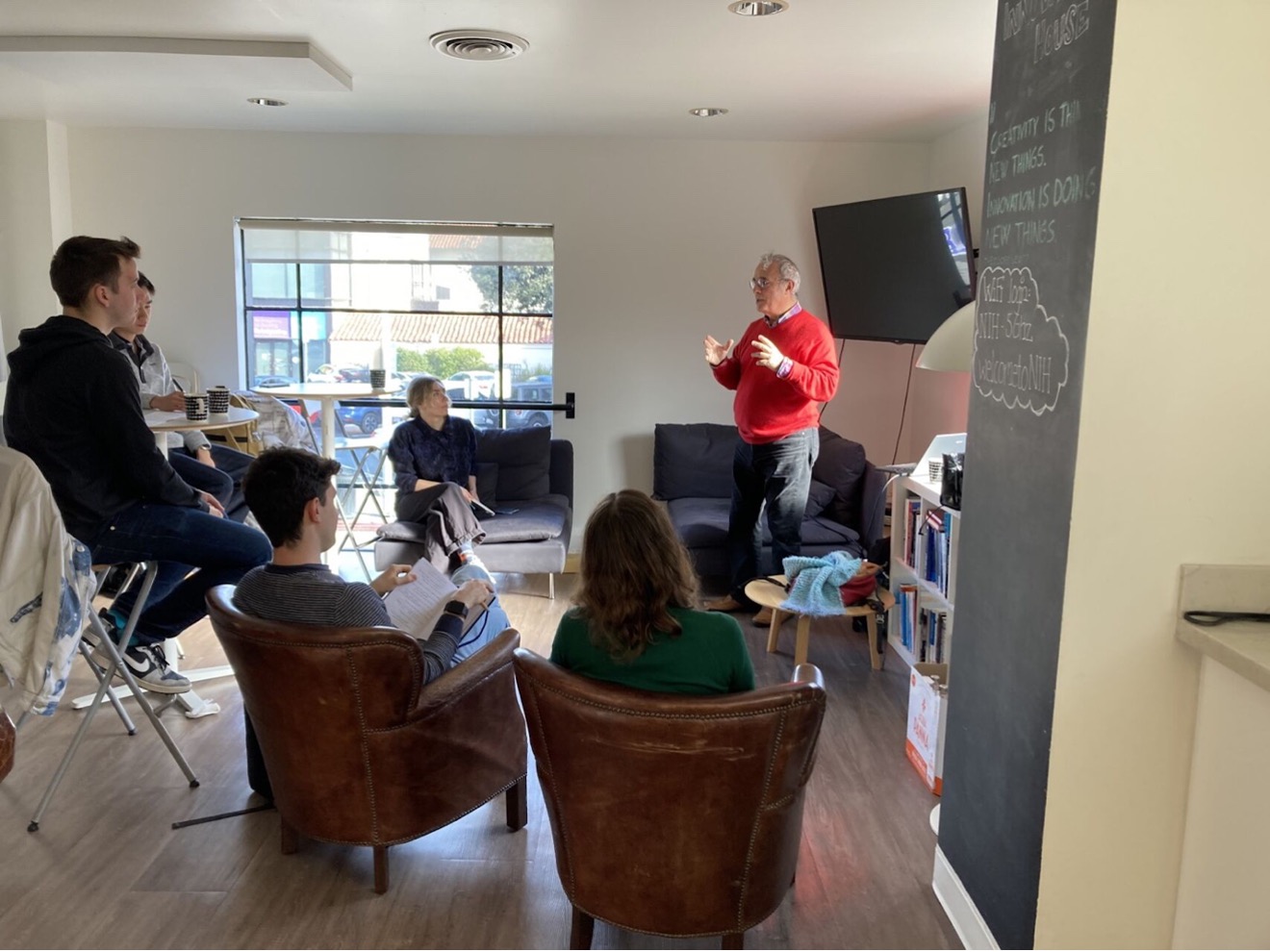In the world of shiny Patagonia vests, dreams of reaching Mars, and the never-ending hustle of building new startups, there’s a unique spirit — the spirit of shooting for the stars. As we basked in the rays of the Californian sun during the Aurora California trip, the question lingered: what makes this place unique? Let’s jump into what we’ve learned about the uniqueness of Silicon Valley, examining both its strengths and weaknesses.
Silicon Valley’s Golden Roots
Silicon Valley’s tale begins with outcasts finding a home — a narrative that stretches back to the Gold Rush when people flocked to California in pursuit of shimmering dreams in its soil. Even back then, the search wasn’t just for gold; it was a quest for a place where dreams could come true. Today, almost half of the households in Silicon Valley speak a language other than English at home, showcasing a diverse tapestry that has been woven since the Gold Rush. As shared by Jeff Cabili, a seasoned entrepreneur and Stanford teacher, this history echoes a timeless truth: ”Your origin doesn’t matter; what you bring to the table does.” This inclusivity fuels the passion of those seeking the next big thing, uniting them in a community with a shared goal of success, just as those early dreamers sought their fortunes in the gold-laden hills.
Your origin doesn’t matter; what you bring to the table does.
Embracing New Ideas
Silicon Valley’s inclusivity is essential for its success since it thrives on fresh perspectives and celebrating new ideas. Dr. Mario Herger, Austrian entrepreneur, writer and startup advisor, who has been living in the Valley for over 20 years and regularly goes to conferences that have nothing to do with what he is doing just to keep an open mind, told us that “every [brilliant] idea you ever heard [was] stupid” and that the Valley is a “magnet for outcasts.” The Bay Area became the entrepreneurial capital of the world by embracing these outcasts and their ideas even when they sounded stupid. Since making the impossible a reality is what innovation in Silicon Valley often is.

Risk-Taking and Learning from Failure
In Silicon Valley, taking risks is second nature. Failure isn’t a roadblock; it’s a detour to success. Successful individuals view time as a marathon, not a sprint. As we talked to many investors, venture capitalists, and serial entrepreneurs, one thing became clear: the Valley appreciates failure and resilience much more than being a safe player and cycling down Main Street with safety wheels on your bicycle (and not just metaphorically: the infrastructure is still heavily car-centric in the Bay Area, but that’s another story…).
Failure isn’t a roadblock; it’s a detour to success.
The Silicon Valley Mindset
Positivity and excitement are Silicon Valley’s lifeblood. In Europe, fear of failure often holds us back. The Valley teaches us that failure is just another chapter in a success story. Positive encouragement and a can-do attitude fuel the journey to success. “The critique is not remembered [the doer] is,” says Dr. Heger. Discussing the difference between the European and the Silicon Valley mindset, he adds that in Europe, instead of finding the solution to X, people often try to prove “why there will never ever be a solution to X.” When you try to reach the moon it’s easy to see progress by building longer and longer ladders, but you will never reach your goal. Rocket development has no visible progress, but it has results. Even when the light is not clearly visible at the end of the tunnel, an entrepreneur has to believe in it. It’s not naivety, it’s bravery. Build rockets, not ladders.
A Two-Sided Coin
Sadly, it’s not just the smiles and waves that are fake sometimes. Behind the shiny facade of the billion-dollar success stories, the high rises of San Fransisco, and the investor offices in Palo Alto lies the reality of all the people who live in their cars or campers on the side of the street, or even worse: on the street. While we mainly experienced the shiny and glamorous side of the area, reality revealed itself from time to time: when seeing people living in tents from our Uber ride between a meeting at a fancy restaurant and a nice office, or when visiting an exhibition about people “on the other side of Highway 101” — where just across the street of the heart of Silicon Valley the average income drops by almost 70%. This inequality is a huge challenge for the area. Partly because as housing prices continue to rise, fewer and fewer people can afford to live and work there. But also because there’s a limit to the credibility of entrepreneurs claiming to “make the world a better place” when the situation is so bad in their own backyard.
In navigating the pros and cons of Silicon Valley, one must recognize its unique strengths while acknowledging the challenges it faces. The Valley’s success is rooted in aiming high, embracing diversity, and learning from failures. Yet, it grapples with issues of inequality and a facade that sometimes masks harsh realities. It’s important to strike a balance between embracing its positive attributes and addressing the pressing issues that lie beneath the surface.
This post was written by two of our Aurora students: Margo Gainska, a UX designer passionate about changing things to the better for people, and Kadosa Varga, a Digital Systems and Design student passionate about solving real world problems with technology.